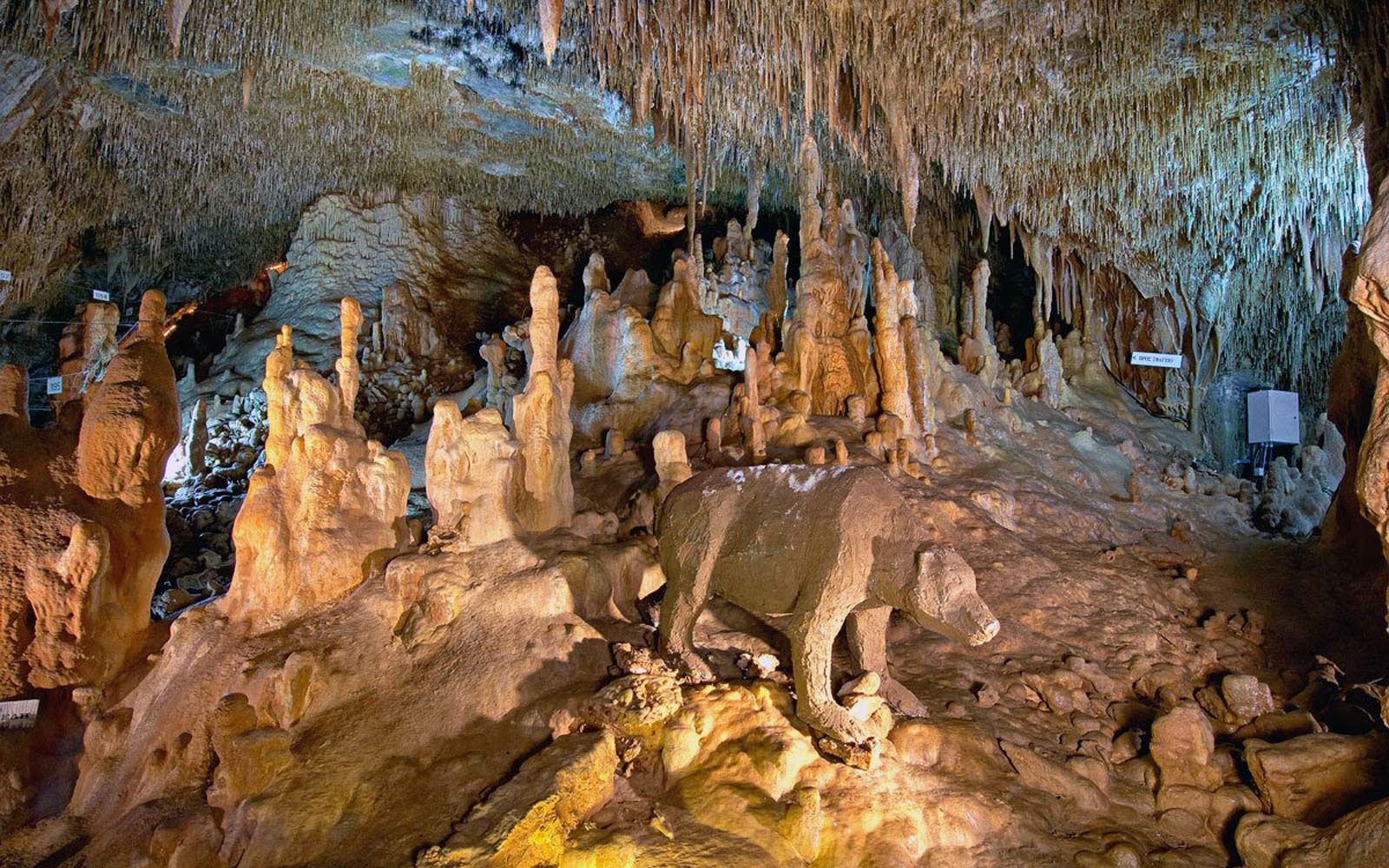Petralona Cave
PETRALONA CAVE
The Cave of Petralona, situated approximately one kilometer from the village of Petralona in the region of Halkidiki, Macedonia, has been accessible to the public since 1979. It was here that the traces of human habitation dating back approximately 700,000 years were unearthed by Aris Poulianos, considered among the oldest known European ancestors.
The Petralona Cave gained renown for its paleontological and paleoanthropological discoveries starting in the 1960s, following the serendipitous finding of a fossilized human skull by local resident Christos Sarrigiannidis. This discovery's intrinsic value and uniqueness spurred extensive archaeological excavations within and around the cave. These excavations, conducted primarily between 1968 and during the periods of 1974-1988 under the guidance of (paleo)anthropologist Aris Poulianos, revealed lithic and bone tools among other artifacts.
Poulianos' scholarly publications on the cave highlight these discoveries, yet the provisional nature of the findings has led to ongoing scholarly debate. Nevertheless, these artifacts remain of paramount importance, offering some of the earliest evidence of human occupation in the geographic expanse of Greece.
From an anthropological standpoint, the fossilized skull is particularly noteworthy, although scholarly consensus regarding its precise dating and interpretation remains elusive. Estimates vary, placing the skull's age approximately 700,000 years ago by some accounts, and roughly 200,000 years ago by others.




